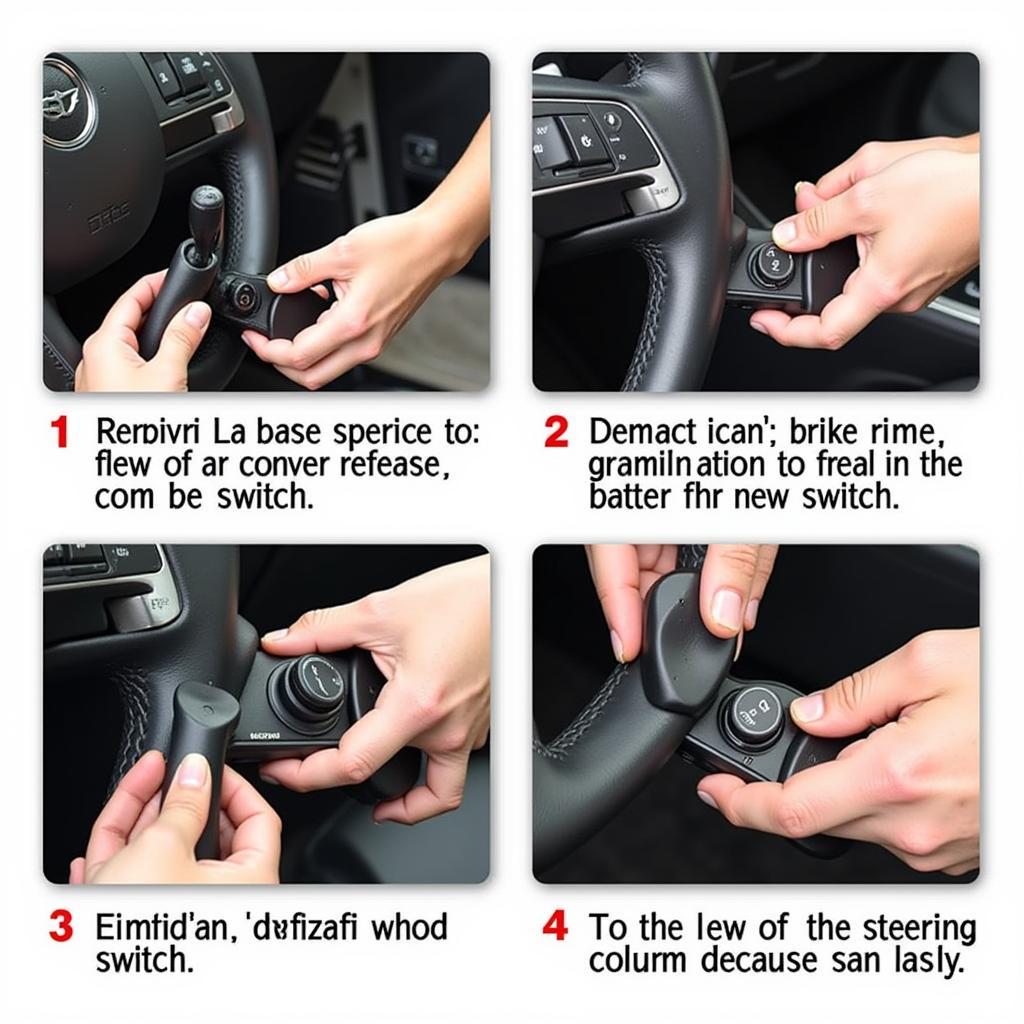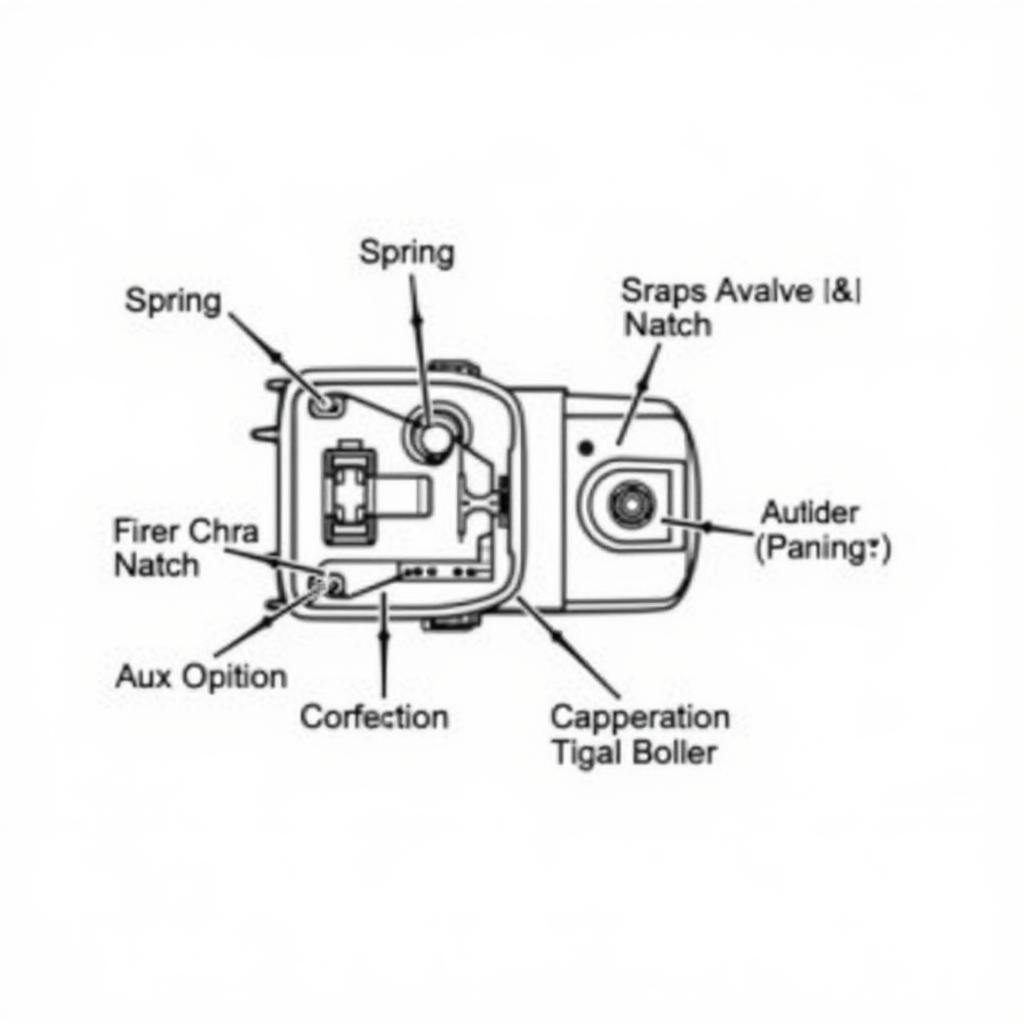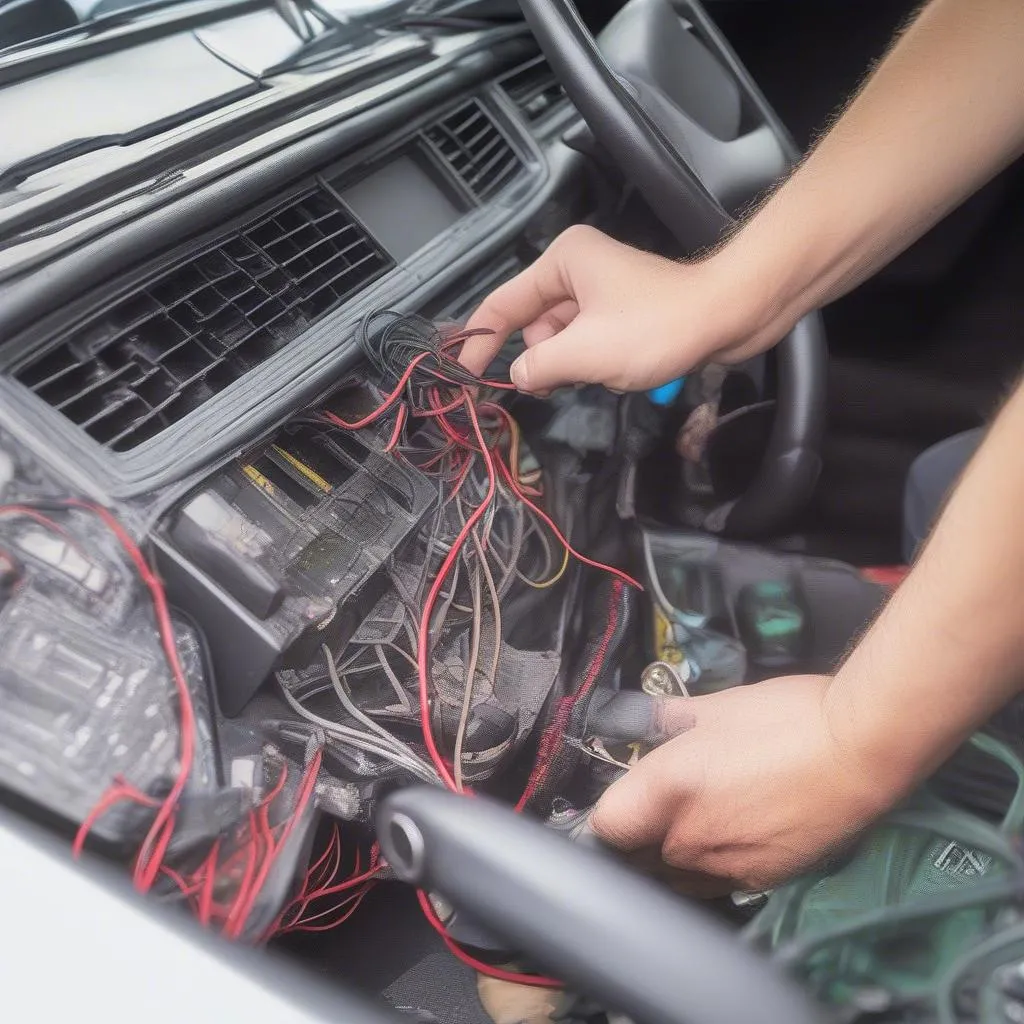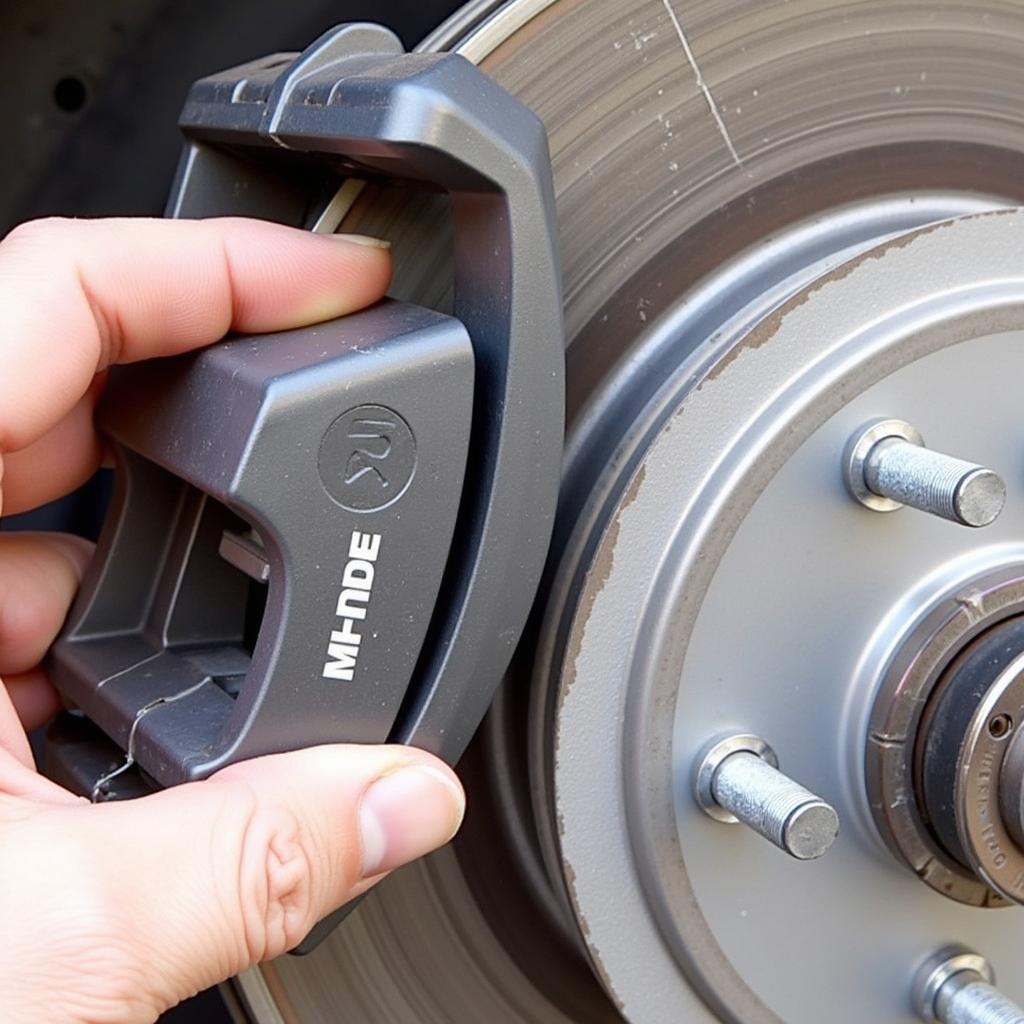The parking and brake light warning combination switch is a critical component in your vehicle’s safety system. It’s responsible for activating your brake lights when you press the brake pedal and your parking lights when you engage the switch. A malfunctioning combination switch can lead to various issues, ranging from minor inconveniences to serious safety hazards. This comprehensive guide will delve into the common problems associated with this switch, how to diagnose them, and potential solutions.
If your parking lights or brake lights aren’t functioning correctly, the combination switch might be the culprit. Sometimes, the issue isn’t the switch itself but rather a blown fuse or a faulty bulb. This guide will help you pinpoint the problem. You can also check out resources on brake warning dash issues, similar to what’s found on the jaguar x type brake warning dash page.
Understanding the Parking and Brake Light Warning Combination Switch
The combination switch is a multi-functional unit typically located on the steering column, just behind the steering wheel. Its primary function is to send signals to the various lights associated with braking and parking. When you press the brake pedal, the switch activates the brake lights, alerting drivers behind you that you’re slowing down or stopping. Similarly, when you turn the switch to activate the parking lights, it illuminates the front and rear parking lights, making your vehicle visible in low-light conditions.
Common Problems with the Combination Switch
Several issues can arise with the parking and brake light warning combination switch. These include:
- Brake lights not working: This is a significant safety concern, as it increases the risk of rear-end collisions.
- Parking lights not working: This can make your vehicle difficult to see at night or in low visibility conditions.
- Intermittent light operation: The lights may work sometimes and not others, indicating a loose connection or internal fault within the switch.
- Brake lights staying on constantly: This can drain your battery and cause confusion for other drivers.
- Parking lights staying on constantly: This can also drain the battery and be a nuisance. You might find information on similar issues, such as an electric park brake warning light, helpful. See more on our electric park brake warning light page.
Diagnosing the Combination Switch
Before replacing the combination switch, it’s crucial to diagnose the problem accurately. Here are some steps to follow:
- Check the fuses and bulbs: A blown fuse or faulty bulb is often the simplest explanation for non-functioning lights. Consult your vehicle’s owner’s manual to locate the appropriate fuse and bulb.
- Inspect the wiring: Look for any loose or damaged wires leading to the combination switch.
- Test the switch with a multimeter: This will help determine if the switch is sending the correct signals. If you are unsure about using a multimeter, consult a qualified mechanic.
Replacing the Combination Switch
If the diagnosis points to a faulty combination switch, replacement is usually necessary. The process varies depending on the vehicle make and model, but generally involves removing the steering wheel and column covers to access the switch.
- Disconnect the battery: This is essential to prevent electrical shocks.
- Remove the necessary components: This may include the steering wheel, column covers, and other trim pieces.
- Disconnect the wiring harness: Carefully disconnect the wiring harness from the old combination switch.
- Install the new switch: Connect the wiring harness to the new switch and secure it in place.
- Reassemble the components: Reinstall the steering wheel, column covers, and other trim pieces.
- Reconnect the battery: Test the lights to ensure the new switch is working correctly.
 Replacing a Brake Light Combination Switch
Replacing a Brake Light Combination Switch
Some issues, like a Veloster’s e-brake warning light malfunction, might require a more specialized approach. Check out our guide on veloster e brake warning light does not work for more information.
Preventing Future Problems
Regular maintenance and inspections can help prevent issues with the combination switch. Ensure all wiring and connections are secure and free from damage. Address any electrical issues promptly to avoid further complications. For instance, a Kia Optima with a brake warning that won’t start could indicate a deeper problem. Refer to kia optima check brake warning won’t start for more details.
What causes the combination switch to fail?
Normal wear and tear, exposure to moisture, and electrical shorts are common causes of combination switch failure.
How much does it cost to replace a combination switch?
The cost varies depending on the vehicle make and model, but typically ranges from $50 to $200 for the part itself. Labor costs can add another $100 to $300.
Can I replace the combination switch myself?
Yes, with the right tools and some mechanical knowledge, you can replace the combination switch yourself. However, if you are unsure, it’s always best to consult a qualified mechanic. Sometimes, the issue isn’t solely the switch but relates to other warning lights. Our article on hyundai battery warning light and brake light might offer further insights.
 Diagram of a Brake Light Combination Switch
Diagram of a Brake Light Combination Switch
Conclusion
The parking and brake light warning combination switch is a crucial safety component in your vehicle. Addressing any issues promptly is essential to maintain safe driving conditions. By understanding the common problems, diagnosis procedures, and replacement process, you can ensure your vehicle’s lighting system functions correctly, keeping you and others safe on the road. Don’t hesitate to seek professional help if you’re uncertain about any aspect of this process. A properly functioning combination switch contributes significantly to your overall road safety.


